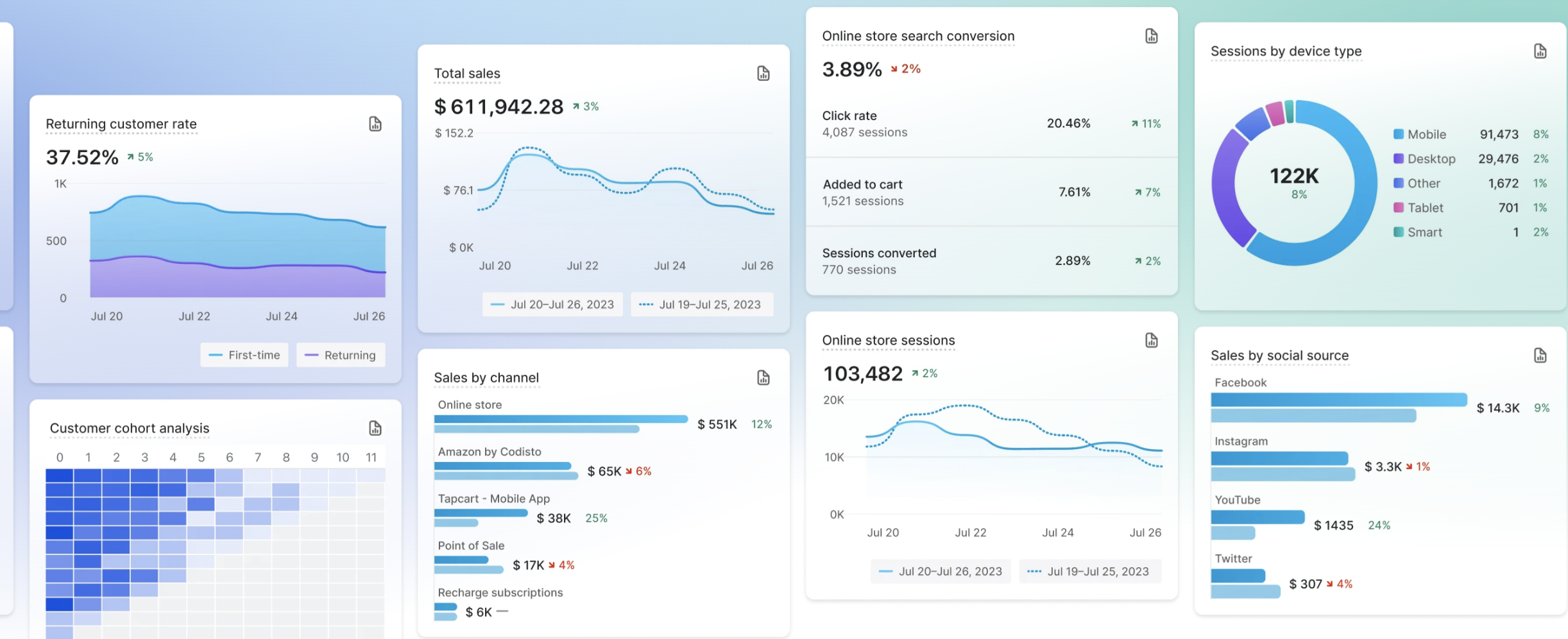Analytics are incredibly important. There’s no ands, ifs, or buts around that. That doesn’t mean they’re always easy to read. That’s why Fyresite has created this guide to the basics of ECommerce Analytics. We’ll review what analytics every merchant should track, where you can track them, and how to leverage some of the most popular analytic tools.
What Analytics Should be Tracked for ECommerce?
There’s a lot of different analytics that can be tracked. Not all of them are going to be relevant to your site, but here are 5 metrics that will be relevant to any and every eCommerce merchant.
Audience
The Audience metric is who is interacting with your site. It tells you where they are from, what their demographics are, what their interests are, and even the technology they use.
This information can be combined with any of the next 4 metrics to tell you what your audience is doing on your site and how they get there.
Acquisition
This metric is all about how users get to your site. There are two ways acquisition can be viewed. On the high level, you can see what channels they are going through to find you. These channels include organic search, organic social, direct, referral, organic shopping, and more.
You can also look at it from a more granular level, and see the specific link address they use to get to your site. If you have backlinks, or links in social media bios, you can see the amount of users you get from there.
This can help give insight into where your marketing efforts are succeeding, and where you may need to reallocate these efforts.
Behavior
By leveraging the behavior metric, you can see how users act when they reach your site. You can see what pages they go to, how long they spend there, and if they made any conversions while on that page.
This is helpful for telling you what content your audience likes the best, and what aspects of your site are the most valuable.
Conversions
In eCommerce, conversions most commonly refer to sales. However, you can set multiple conversion targets, all with valuable information.
Common conversions to track in eCommerce are “add to cart”, “entered billing information”, “email sign-up”, “saved to wishlist”, and, of course, “completed purchase”.
Paid Efforts ROI
Most eCommerce merchants will at least try paid efforts. These include can search ads, email marketing, social media ads, and even sponsorships.
With anything you spend money on, you want to make sure that the cost was worth it. You can track your KPIs (link clicks, ad views, etc) to see if you have reached your ideal ROI.
Where Can These ECommerce Analytics be Tracked?
Knowing what analytics to track is not much help if you don’t know where to find the analytics you wish to track. Here are some of the common analytic tracking tools.
Leveraging Google Analytics for ECommerce
Google Analytics is the gold standard for online analytics tracking. To use Google Analytics, you need to connect your store and verify it. If you’re a Shopify Merchant, you can follow our guide to make sure you have your Google Analytics tag to your code to ensure proper tracking.
Google Analytics allows you to track all of the most important eCommerce analytics that are mentioned above. It also lets you set the date range for the data, so you can see how it changes over a month, 90 days, or any time frame that you choose.
Leveraging Social Media Analytics for ECommerce
Social Media channels offer their own analytics. Facebook and Instagram analytic insights can be found in the Meta Business Suite. You can also look at individual posts to see how they performed.
Social media analytics are helpful to see how your organic posts are doing, but even more helpful to gain insights into how your social media ads are performing. This will help you to know what social channels are beneficial for your business, and which ones you shouldn’t prioritize.
Shopify Analytics
As the name might suggest, this analytic tool can only be used by Shopify merchants. That doesn’t make it any less valuable. Shopify Analytics can offer insights into shopping cart abandonment, returning customer rate, bounce rate, and more.

ECommerce Analytics Telling You Something You Don’t Like?
Now that you know how to find your analytics, are they telling you something needs to change?
You could benefit from a platform migration or site redesign. Reach out to Fyresite today to see what option is right for you.
 Taylor Simmons
Taylor Simmons 

